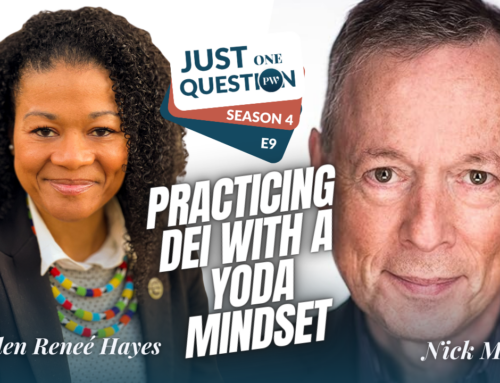Another in an occasional series on storytelling
When I ask my mid-career executives in the Harvard Professional Education and Development program whether they believe that executives need to learn to be better storytellers, they are all on board. No one dissents. When I ask them to describe what makes for a good story, I get the usual suspects. A story has a beginning, middle, and end. That’s a favorite. True enough, but then so do pencils, as one of my colleagues likes to say. True, but not particularly helpful. Where do you start? And where do you end? And what do you put in the middle?
A story has emotion. Again, true, but not monumentally helpful. Lots of human moments have emotions in them and they are not stories. Arguments, hugs, the chance meeting of old friends. All emotional; none necessarily stories.
A story has a protagonist and an antagonist. That’s another typical comment, and it at least is correct. I’ll respond with something like, “You mean, a hero and a villain?” And the student usually concurs. It’s a good thought, because a protagonist and antagonist are liable to immerse themselves in conflict, and conflict (like emotion) is an important part of storytelling. It’s not the whole ball of wax, but it is one essential ingredient.
Gradually we begin to build up the idea of a story in this discussion, and we end up with heroes and villains, emotion, conflict, and a story arc, or building up to a climax followed by a resolution.
As soon as I introduce the idea of story structure, the discussion always heats up, because people really do know what a story is. Once you describe a quest to them, for example, they recognize the story in it, because they’ve heard hundreds of quests. They realize they in fact know more about storytelling than they thought – at least that one story. It’s Star Wars, Game of Thrones, and every Marvel movie ever made.
A recent study alerts me to another aspect of storytelling that I had been inclined to ignore, as beneath the notice of these budding storytellers, but will no longer: narrative reversals.
A narrative reversal happens when the hero of a story goes from being tied at the stake, just about to be slaughtered as a ritual sacrifice, to being released and forced to marry the ruler’s daughter. To being sent on a do-or-die mission to kill the dragon terrorizing the kingdom. To finding out that the dragon is actually old and lazy and happy to exchange a few golden trinkets for peace and quiet. To coming back triumphantly only to discover that the next-door kingdom is attacking, determined to kill the new prince. And so on. We love the roller-coaster ride, apparently, and the more ups and downs the better. In fact, the study notes that The Simpsons episodes that have more narrative reversals rank higher on the IMDB list than the others.
The more reversals the better. In fact, this study posits that the narrative reversal is the basic unit of storytelling. So I’m going to have to revise my snobbish notion of storytelling using too many narrative reversals as creating simple potboilers, like The Da Vinci Code, and put the technique high up on the list of necessary ingredients. And I’m going to coach my students in the course on “Influence and Persuasion” to embrace the narrative reversal in their business talks.
After all, the business world is a roller-coaster, isn’t it?









On a micro level, I think the South Park writers would call this the friction between beats! https://www.youtube.com/watch?v=vGUNqq3jVLg
I love this — the South Park people stumbled on the same thing!